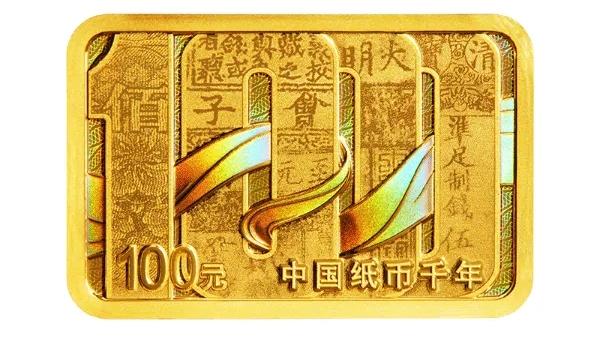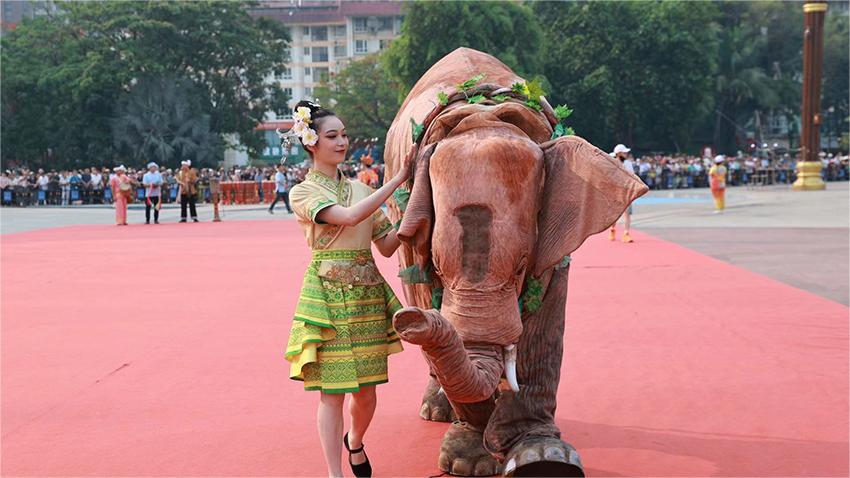Major finds at Wuwangdun illuminate China's Warring States period
HEFEI, April 19 (Xinhua) -- The Wuwangdun tomb, under archaeological excavation in east China's Anhui Province, has been confirmed by the National Cultural Heritage Administration as the largest and highest-level tomb from the ancient Chu state dating back over 2,200 years.
During the reign of King Cheng in the Western Zhou Dynasty (1046-771 BC), Xiong Yi was enfeoffed as the ruler of Chu. Historical records indicate that in remote mountains, he cleared the forests, driving a cart of firewood and wearing ragged clothes. His offerings to the King of Zhou included peach wood bows and thorn branch arrows. At an event held by King Cheng to meet with lords of the vassal states, he could only guard the fire pits in the courtyard and was not entitled to participation.
Blending elements of the north and south and starting from scratch, the state of Chu quickly rose to the leading power in the south. Its resplendent literary works and exquisite lacquer and bronze ware showcased its unique charm and imagination, playing a magnificent symphony in the civilization of China.
UNRAVELING THE LEGACY OF CHU
China's Warring States Period ran from 475 BC to 221 BC.
With the influence of the Zhou kings increasingly diminished, many vassal states were annexed, leading to a situation where seven major states competed for dominance. Chu was the second most powerful state after Qin.
However, Chu's insufficient reforms left itself frequently defeated by Qin, forcing it to relocate its capital on and on. In 263 BC, with the help of Huang Xie, Xiong Wan, the son of King Qingxiang of Chu, who had been a hostage in Qin, returned to Chu and ascended the throne, known as King Kaolie of Chu by later generations. He appointed Huang Xie as chancellor, won several major battles, and briefly revived Chu.
In 241 BC, Huang organized the last joint attack against Qin in the history of the Warring States, which ended in failure. Fearing Qin's retaliation, Chu moved its capital to today's Shouxian in Huainan. In 238 BC, after a reign of 25 years, King Kaolie died, and Huang was assassinated by the power minister Li Yuan, leading to the gradual decline of Chu's last glory.
After the brief ten-year reign of the young King You, Kong Kaolie's other young son, King Ai, reigned for two months before being executed along with Li by the last king of Chu, Fuchu. Although in 224 BC, Qin's offensive aimed at annihilating Chu ended in a major defeat, faced with Qin's veteran general leading 600,000 troops the following year, Chu, which had lasted for 800 years, ultimately fell.
By 221 BC, Qin Shi Huang, China's first emperor, had unified China, marking the end of the Warring States.
The mystery of who lies in the grand Wuwangdun tomb persists. The last capital of Chu witnessed the reigns of four kings: King Kaolie, King You, King Ai, and Fuchu. King Ai was killed shortly after his accession, and Fuchu was captured by the Qin army. The academic community widely concludes that the tomb of King You was discovered in 1933. Therefore, some scholars suggest that Wuwangdun likely belongs to the legendary King Kaolie.
There is, however, no empirical evidence. Gong Xicheng, leader of the Wuwangdun archaeological excavation team, noted the archaeological excavation is only one-third complete, and the ongoing archaeological work will further seek key evidence, such as bamboo slips and inscriptions on bronze vessels, to identify the tomb owner.
HIGHEST-RANKED CHU TOMB
Wuwangdun, with a base diameter of over 130 meters and a height of 14 meters, is aligned east-west with the royal palace of Chu. To the south lies the tomb attributed to his son King You, with the central axis running through two peaks of the nearby mountain range, reflecting the tomb owner's long-term planning and consideration, said Shen Hanqing, former director of Huainan Museum.
Tomb thefts in 2015 highlighted the need for urgent archaeological interventions that started in September 2020.
Over three years of continuous archaeological work have revealed more insights into Wuwangdun.
The tomb is encircled by a moat with a circumference of about 5 kilometers, covering a total area of approximately 1.5 million square meters. Within the mausoleum grounds, there are chariot pits and sacrificial pits, among other relics. The chariot pit, located on the west side of the main tomb, is about 148 meters long from north to south, making it the longest known chariot pit among Chu-style tombs, said Gong.
The tomb itself has a long, sloped entrance path to the east, measuring 42 meters in length. Iron tools used during the construction of the mausoleum, roof tiles, and a well-preserved Chu lacquer fan were found in its mound.
"I imagined a scene from over 2,200 years ago, where a supervisor was fanning himself and urging the workers to labor," said an archaeologist who participated in the excavation. She examined every tile found in the earthen mound and, although no inscriptions were found, speculated that a building similar to a ceremonial hall might have been constructed above.
The bottom of the tomb pit is square, measuring about 22 meters on each side, and the center is constructed using huge timber frames to form the burial chamber.
The burial chamber has a central chamber for the coffin and four side chambers around. Each side chamber is further divided into two by wooden walls, making the entire burial chamber nine rooms. According to Gong, these are the most partitioned chambers seen in Chu-style tombs to date.
Wuwangdun has so far yielded over a thousand cataloged artifacts, including bronze ritual vessels, lacquered wooden objects, musical instruments, and figurines.
Significant ink script on the burial chamber's cover boards has been discovered, detailing the chambers' sequence and functions. Over 100 phrases and nearly a thousand characters have been found so far.
Among the exquisite items found is a phoenix-tiger drum stand, unique to Chu nobility, suggesting its use either in concerts or shamanistic practices. Each phoenix, stepping on a fierce tiger and holding a pearl in its beak, is finely painted with feathers and carved with dragon motifs as if to enhance the drum's majestic sound. Other finely crafted lacquered items include screens, boxes, cups, and chessboards, all beautifully decorated.
A huge cauldron with a mouth diameter exceeding 88 centimeters is larger than the Zhuke Cauldron, the most notable artifact excavated from King You's tomb and now a top treasure of Anhui Museum.
The Zhuke Cauldron has a mouth diameter of 87 cm, weighs about 400 kg, and features inscriptions such as "Zhuke," which stands as the caster name, and "Anbang," which means "securing the nation," ranking as the second-largest ancient bronze cauldron in China.
Gong believes that the artifacts unearthed from Wuwangdun represent the highest achievements of Chu culture. "They date from a critical period just before the formation of a unified state."
FUTURE OF WUWANGDUN
Recent archaeological efforts at Wuwangdun have advocated for and advanced a scientific, standardized, and detailed approach. Methods such as the use of menthol solidification technology to extract ancient bamboo mats and infrared imaging to reveal inscriptions on cover boards highlight the depth of multidisciplinary integration in Chinese archaeology today.
Cheng Hao, director of Huainan's Culture and Tourism Bureau, emphasized the city's commitment to the excavation and preservation of Wuwangdun. Over 100 million yuan (about 14 million U.S. dollars) has been invested in the excavation shed, laboratories, among others. The city plans to leverage these historical narratives to enhance Huainan's cultural influence and tourism appeal.
The sweeping conquests of Qin Shi Huang and unification of China in 221 BC marked the end of the tumultuous Warring States period.
This era, known for its dramatic conflicts and legendary figures, continues to resonate through history, illustrating the enduring legacy of its institutional innovations, progressive ideologies, and pragmatic cultural spirit, stated Tian Shuai, a research fellow from the Department of Archaeology and Museology at Beijing Normal University.
Photos
Related Stories
- Scientists restore profile of ancient Chinese emperor through genetic analysis
- China's archaeological site parks register strong revenue growth
- Ancient slips mirror the rise and fall of Qin Dynasty
- China unveils highest-level Chu state tomb excavated to date
- Ancient noble tomb found in east China's Jiangsu
Copyright © 2024 People's Daily Online. All Rights Reserved.









